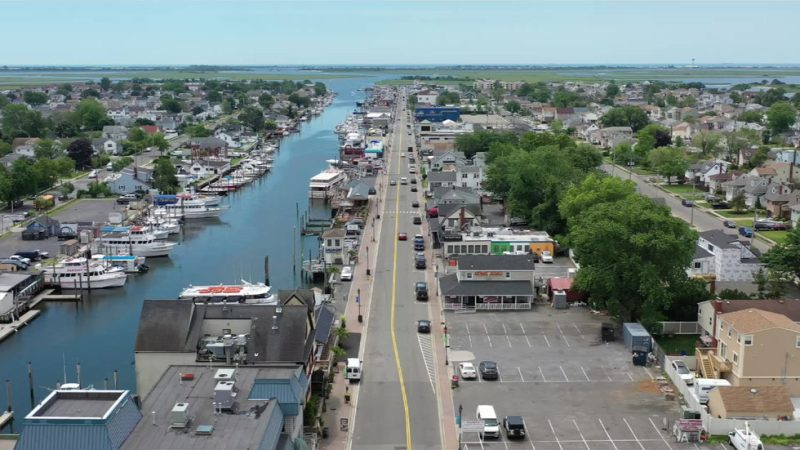Embracing the Rich Tapestry of Culture and History in San Antonio

Nestled in the heart of Texas, San Antonio stands as a vibrant city that seamlessly intertwines its rich history with a dynamic modernity. From the iconic Alamo to the enchanting River Walk, San Antonio captivates visitors with its unique blend of cultural diversity, architectural wonders, and a palpable sense of community. In this article, we will explore the multifaceted allure of San Antonio, delving into its historical significance, cultural offerings, culinary delights, and the warmth of its people.
Historical Tapestry:
San Antonio’s historical tapestry is woven with threads of conquest, colonization, and resilience. At the heart of this narrative is the Alamo, a symbol of courage and sacrifice. The site of the famous Battle of the Alamo in 1836, this Spanish mission turned fortress embodies the spirit of Texas independence. Visitors can wander through the hallowed grounds, where heroes like Davy Crockett and Jim Bowie once stood, immersing themselves in the echoes of the past.
Beyond the Alamo, San Antonio boasts a treasure trove of historical landmarks. The San Fernando Cathedral, one of the oldest cathedrals in the United States, stands as a testament to the city’s enduring faith and architectural elegance. The Spanish Governor’s Palace, a National Historic Landmark, provides a glimpse into the colonial era with its well-preserved adobe walls and charming courtyards.
Cultural Diversity:
San Antonio’s cultural landscape is a mosaic of influences, reflecting the city’s history as a melting pot of Spanish, Mexican, and Western heritage. The vibrant colors of Market Square, also known as El Mercado, beckon visitors with an array of shops, restaurants, and live entertainment. This bustling market encapsulates the festive spirit of San Antonio, offering a sensory journey through the flavors, sounds, and traditions of its diverse community.
The city’s commitment to preserving its cultural heritage is evident in events like Fiesta San Antonio, an annual celebration that showcases the city’s diversity through parades, music, and cultural exhibitions. Whether savoring traditional Mexican cuisine or experiencing the rhythm of flamenco, visitors can immerse themselves in the kaleidoscope of cultures that define San Antonio.
Architectural Marvels:
San Antonio’s architecture is a testament to the city’s evolution through the centuries. The iconic Tower of the Americas, constructed for the 1968 World’s Fair, stands tall as a symbol of progress and innovation. Offering panoramic views of the city, the tower provides a striking contrast to the historic structures that dot the landscape.
The River Walk, a meandering network of waterways lined with shops and restaurants, exemplifies San Antonio’s commitment to blending nature with urban development. Strolling along the riverbanks, visitors are treated to a picturesque scene that encapsulates the city’s charm. Architectural gems like the Majestic Theatre, with its Spanish Mediterranean design, contribute to the city’s architectural diversity.
Culinary Delights:
San Antonio’s culinary scene is a delightful fusion of flavors, influenced by its diverse cultural heritage. Tex-Mex cuisine takes center stage, with dishes like enchiladas, tacos, and tamales gracing the menus of local eateries. From the historic Mi Tierra Café y Panadería to the innovative offerings at the Pearl District’s culinary scene, San Antonio caters to a broad spectrum of palates.
The city’s farmers’ markets, such as the Pearl Farmers Market, showcase the region’s agricultural bounty, from fresh produce to artisanal cheeses. The culinary renaissance in San Antonio extends beyond traditional fare, with a burgeoning craft brewery scene and a wave of innovative chefs pushing the boundaries of gastronomic exploration.
Warmth of the People:
While San Antonio’s attractions are undoubtedly captivating, it is the warmth of its people that leaves a lasting impression. The city’s friendly residents, known for their hospitality, welcome visitors with open arms. From the lively street festivals to the casual conversations at local cafes, San Antonio fosters a sense of community that transcends cultural differences.
The city’s commitment to inclusivity is evident in initiatives like the DreamWeek Summit, an annual event that promotes civil and civic discourse on equality and tolerance. Through art, education, and community engagement, San Antonio continues to build bridges and create a welcoming environment for residents and visitors alike.
Conclusion:
San Antonio, with its storied history, cultural diversity, architectural marvels, culinary delights, and warm community spirit, stands as a beacon of Texas hospitality. Whether wandering through the historic streets, savoring the flavors of Tex-Mex cuisine, or immersing oneself in the vibrant cultural scene, visitors find an enchanting blend of the old and the new. San Antonio invites all to become part of its narrative, embracing the rich tapestry that defines this extraordinary city in the heart of Texas.
Q1: What is the significance of the Alamo in San Antonio?
A: The Alamo is a historic site in San Antonio that gained fame during the Texas Revolution in 1836. It was a pivotal location where a small group of Texan defenders, including iconic figures like Davy Crockett, fought against Mexican forces. Despite the defeat, the Battle of the Alamo became a symbol of Texan independence.
Q2: What is the River Walk, and what makes it popular?
A: The River Walk is a scenic network of waterways that winds through downtown San Antonio. Lined with shops, restaurants, and attractions, it’s a popular destination for locals and tourists alike. The River Walk offers a unique atmosphere with its picturesque setting, diverse dining options, and vibrant cultural events.
Q3: How diverse is San Antonio’s cultural scene?
A: San Antonio boasts a rich cultural tapestry influenced by Spanish, Mexican, and Western heritage. Events like Fiesta San Antonio celebrate this diversity through parades, music, and cultural exhibitions. The city’s Market Square, also known as El Mercado, is a vibrant hub that showcases a blend of traditions, flavors, and crafts.
Q4: What are some must-visit landmarks in San Antonio?
A: Apart from the Alamo, other must-visit landmarks include the San Fernando Cathedral, one of the oldest cathedrals in the U.S., and the Tower of the Americas, an iconic structure with panoramic views. The Majestic Theatre, the Spanish Governor’s Palace, and the historic Pearl District are also noteworthy.
Q5: What is Tex-Mex cuisine, and where can it be experienced in San Antonio?
A: Tex-Mex cuisine is a fusion of Texan and Mexican culinary traditions. In San Antonio, you can experience Tex-Mex at various eateries. Mi Tierra Café y Panadería is a historic spot offering traditional dishes, while the Pearl District has a mix of traditional and innovative culinary offerings.
Q6: How does San Antonio celebrate cultural diversity?
A: San Antonio celebrates its cultural diversity through events like Fiesta San Antonio, which showcases the city’s multicultural heritage. Additionally, initiatives like the DreamWeek Summit promote civil discourse on equality and tolerance, fostering an inclusive environment for residents and visitors.
Q7: What is the best time to visit San Antonio?
A: The best time to visit San Antonio is typically during the spring (March to May) and fall (September to November) when the weather is mild. However, Fiesta San Antonio in April and the holiday season in December are also popular times to experience the city’s vibrant atmosphere.
Q8: Are there family-friendly attractions in San Antonio?
A: Yes, San Antonio is family-friendly with attractions like the San Antonio Zoo, SeaWorld, and the DoSeum – a children’s museum. The city’s interactive and educational offerings make it an excellent destination for families.
Q9: How can one explore the local arts scene in San Antonio?
A: The local arts scene in San Antonio can be explored through galleries in the Blue Star Arts Complex, the McNay Art Museum, and public art installations throughout the city. First Fridays in Southtown offer a monthly art walk, providing an opportunity to engage with the thriving arts community.
Q10: Is transportation convenient in San Antonio?
A: San Antonio offers various transportation options, including buses, trolleys, and rideshare services. The downtown area is also walkable, and the River Walk provides a unique way to explore the city. Additionally, the city has a bike-share program for those interested in cycling.
These FAQs provide a glimpse into the diverse and dynamic aspects of San Antonio, inviting visitors to explore its history, culture, and vibrant attractions.






